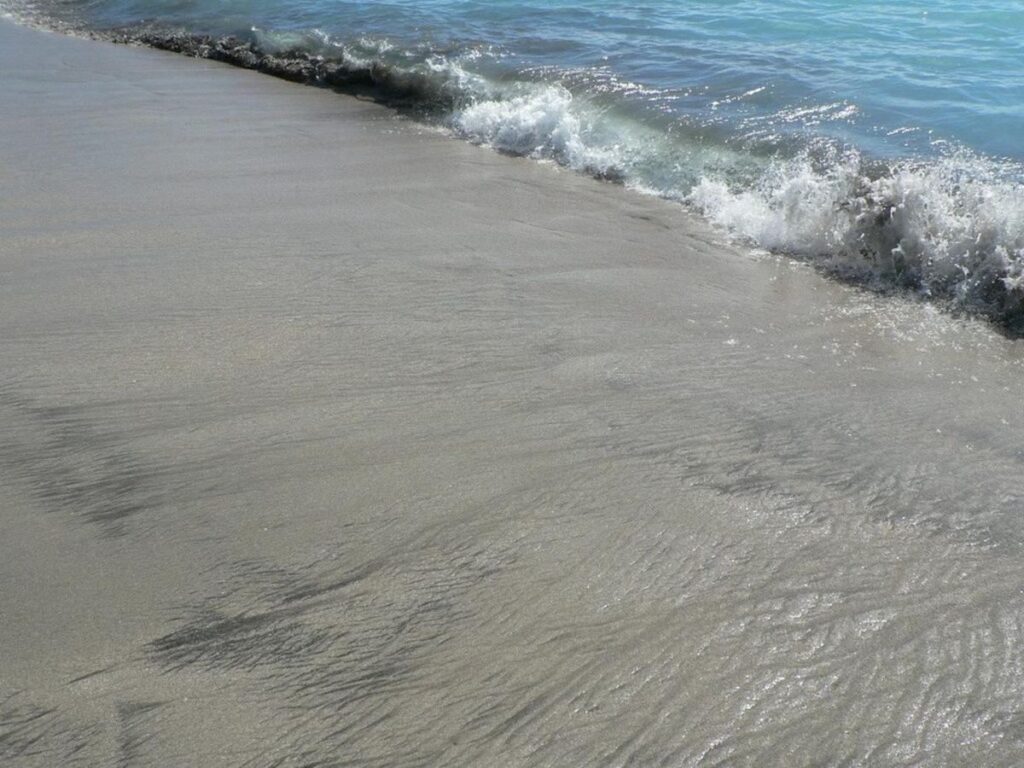Mystery and intrigue have long surrounded the Bermuda Triangle, a stretch of the Atlantic Ocean framed by Miami, Bermuda, and Puerto Rico, infamous for the unexplained disappearances of ships and aircraft. The region’s notoriety has spawned countless theories and speculations, from supernatural forces to extraterrestrial interventions. However, recent research and scientific analysis suggest that the truth behind the Bermuda Triangle is far more grounded in reality than the myths would have us believe. This article aims to demystify the Bermuda Triangle by examining historical incidents, evaluating scientific explanations, and exploring its cultural impact.
Key Takeaways
- The Bermuda Triangle’s reputation for mysterious disappearances is not supported by statistical evidence compared to other heavily traveled regions.
- Historical disappearances, such as Flight 19 and the Carroll A. Deering, are often attributable to human error, natural causes, or a combination of both.
- Scientists like Karl Kruszelnicki and organizations like NOAA highlight the role of probabilistic events and heavy maritime traffic in the perceived anomalies.
- Popular theories involving aliens, Atlantis, and other sensational explanations have been debunked through scientific inquiry and critical thinking.
- The Bermuda Triangle’s cultural significance persists in media and entertainment, shaping public perception and contributing to the mythos of the region.
Unraveling the Bermuda Triangle: Myths, Mysteries, and Reality

Historical Context of the Bermuda Triangle Legend
The Bermuda Triangle’s enigmatic reputation can be traced back to the voyages of Christopher Columbus in 1492. During his first expedition, Columbus reported compass malfunctions and strange occurrences. However, it wasn’t until the 1950s that the modern legend of the Bermuda Triangle began to take shape, fueled by a series of unexplained vanishments in the North Atlantic.
The Bermuda Triangle is located in an area of the Atlantic Ocean where storms from multiple directions can converge, making rogue waves more likely to occur.
The legend grew as stories of disappearances accumulated, including the infamous Flight 19 incident, which involved navigational errors by experienced pilots. Other incidents, such as the Carroll A. Deering and Star Tiger, hinted at more earthly causes like mutiny or foul play. The boundaries of the Triangle seem vague, often encompassing disappearances occurring nearby, which adds to the concept’s ambiguity.
In conclusion, while the Bermuda Triangle has been a source of mystery and intrigue, many of the alleged incidents can be attributed to human error, natural causes, or both. As we continue to explore and understand our world, the importance of separating fact from fiction becomes ever more apparent.
Flight 19 and the Legacy of Navigational Errors
The enigma of Flight 19 stands as a cornerstone in the Bermuda Triangle’s lore. The disappearance of five TBM Avenger torpedo bombers during a routine training mission in 1945 has fueled speculation and mystery for decades. The flight, led by an experienced pilot, Lt. Charles Taylor, became disoriented due to what is believed to be a combination of navigational errors and environmental factors.
While the exact cause of the Flight 19 incident remains unknown, the event underscores the human element in the Triangle’s history. It highlights the potential for error even among seasoned navigators.
The following table summarizes key aspects of the Flight 19 disappearance:
| Date | Aircraft | Personnel | Last Known Position |
|---|---|---|---|
| Dec 5, 1945 | TBM Avenger | 14 Airmen | Near Florida Straits |
Subsequent search efforts, including the loss of a rescue plane with 13 crew members, only deepened the mystery. This tragic sequence of events serves as a reminder of the perils of at-sea navigation and the importance of respecting the powerful forces of nature that govern the Triangle’s waters.
Analyzing Notable Disappearances: Natural Causes or Human Error?
The enigma of the Bermuda Triangle continues to intrigue as we delve into the details of its most notorious disappearances. The question remains: are these incidents the result of natural phenomena or human mistakes? For instance, the Maria Celeste and the USS Cyclops incidents suggest a blend of human error and natural disasters. The more recent case of a private plane in 2017 points to a pilot’s decision to fly into hazardous weather conditions.
While supernatural explanations often capture the public’s imagination, the reality is likely more mundane, with environmental and geophysical factors playing a significant role.
The agonic line and rogue waves are just two examples of natural occurrences that can lead to catastrophic outcomes if not properly accounted for. On the other hand, the high volume of traffic within the Triangle’s waters, coupled with adverse weather and strong oceanic currents, provides a more grounded explanation for many of the disappearances.
Cases like Flight 19 and the Carroll A. Deering add complexity to the debate, as they hint at navigational errors, mechanical issues, or even human conflicts such as mutiny. The lack of substantial evidence and the Triangle’s ambiguous boundaries only fuel further speculation.
Scientific Perspectives on the Bermuda Triangle Phenomenon

Karl Kruszelnicki’s Probabilistic Explanation
Australian scientist Karl Kruszelnicki provides a grounded perspective on the Bermuda Triangle, attributing the high number of incidents to the laws of probability rather than supernatural causes. Given the heavy maritime and aerial traffic in the area, Kruszelnicki suggests that the volume of occurrences is statistically consistent with expectations for such a busy region.
- The Bermuda Triangle is one of the busiest areas of ocean in the world.
- A higher number of incidents naturally follows from increased traffic.
- Statistical analysis does not show an anomaly in disappearance rates.
The Bermuda Triangle’s notoriety may stem more from human psychology and our propensity for pattern recognition than from any unusual maritime peril.
Kruszelnicki’s approach demystifies the Bermuda Triangle by framing it as a region subject to the same risks and probabilities as any other heavily trafficked area of the world. This probabilistic explanation challenges the sensationalized narratives that have long dominated the public’s imagination.
NOAA’s Stance on Disappearance Frequencies
The National Oceanic and Atmospheric Administration (NOAA) has taken a pragmatic approach to the Bermuda Triangle, focusing on data and statistics rather than the supernatural. Their findings indicate that the number of incidents in the Triangle is not extraordinary compared to other heavily trafficked areas of the ocean. This perspective is supported by a 2010 report which explicitly states that the frequency of mysterious disappearances does not exceed that of any other large, well-traveled maritime zone.
The Bermuda Triangle’s infamy as a site of numerous vanishings is often not supported by hard evidence. Instead, logical explanations such as high traffic volumes, adverse weather conditions, and strong oceanic currents account for many of the disappearances.
Further scrutiny of the Triangle’s incidents reveals that many can be attributed to human error or natural phenomena. For instance, navigational mistakes, particularly those related to the agnostic line, and mechanical failures are common culprits behind the lore of lost ships and planes. The allure of the Triangle continues to captivate the public imagination, but NOAA’s stance emphasizes the importance of looking at the facts rather than fiction.
The Role of Heavy Maritime Traffic in Perceived Anomalies
The Bermuda Triangle, a region steeped in mystery, is also one of the busiest in terms of maritime and air traffic. The high volume of vessels and aircraft traversing this area inevitably increases the likelihood of accidents and disappearances.
While the Triangle’s allure is often attributed to supernatural or extraordinary phenomena, the reality is more mundane. The area’s dense traffic, coupled with challenging environmental conditions, accounts for many of the reported incidents. For instance, the agonic line, where magnetic compass variation is negligible, can lead to navigational errors if not properly accounted for by pilots.
The Bermuda Triangle’s reputation as a vortex of mystery often overshadows the practical considerations of navigating a heavily trafficked region.
The following table illustrates the common factors contributing to the perceived anomalies within the Bermuda Triangle:
| Factor | Description |
|---|---|
| High Traffic Volume | Dense maritime and air traffic increases incident probability. |
| Environmental Challenges | Adverse weather and strong oceanic currents complicate navigation. |
| Navigational Errors | Misinterpretation of the agonic line and compass variations can lead to disaster. |
| Human Factors | Potential for human error or intentional acts such as mutiny or foul play. |
Understanding these factors is crucial in demystifying the Bermuda Triangle and recognizing the natural and human elements at play.
Theories and Truths: Separating Fact from Fiction

Debunking Popular Theories: From Aliens to Atlantis
The Bermuda Triangle has long been a source of fascination, with theories ranging from extraterrestrial involvement to the lost city of Atlantis. Yet, when these narratives are scrutinized, they often fall short of scientific rigor.
- Alien abductions and UFO sightings have been sensationalized in media, but lack credible evidence.
- The mythical city of Atlantis has been a subject of intrigue, yet no concrete proof has been found to link it to the Triangle’s mysteries.
- Conspiracy theories in media, from the Loch Ness monster to UFOs, are compelling for storytelling but not substantiated by facts.
Books and films have capitalized on these enigmatic tales, but the truth is often more prosaic. Weather anomalies, human error, and navigational mishaps are frequently the real culprits behind the incidents attributed to the Triangle. As we peel away the layers of myth, a more mundane reality emerges, one that can be explained by science and rational analysis.
The Impact of Sensationalized Accounts on Public Perception
The Bermuda Triangle’s notoriety is often amplified by sensationalized accounts that captivate the public’s imagination. These narratives, while engaging, tend to overshadow the more plausible explanations for the mysterious occurrences within the Triangle. The allure of the unknown coupled with dramatic storytelling has led to a skewed perception of the area, transforming it into a symbol of inexplicable maritime and aerial disasters.
The Bermuda Triangle serves as a reminder of our propensity for mystery over mundane reality. It is a testament to the power of narrative in shaping our understanding of the world around us.
The following list illustrates how sensationalism has influenced public perception:
- Conspiracy theories and myths gain more traction than scientific explanations.
- Media portrayals often prioritize entertainment value over factual accuracy.
- The line between fact and fiction becomes blurred, leading to widespread misconceptions.
- A single narrative can overshadow decades of navigational advancements and safety improvements.
The Importance of Critical Thinking in Understanding the Triangle
The Bermuda Triangle has long captivated the imagination with tales of mysterious vanishings. However, critical thinking demands scrutiny of these stories against factual evidence. The Triangle’s boundaries are often described as vague, with incidents occurring nearby being inconsistently attributed to the area. This ambiguity fuels the legend but also complicates efforts to demystify it.
The essence of the Bermuda Triangle mystery lies in its inconsistency; each incident differs significantly, making it challenging to define a unified pattern.
While the allure of the unknown is powerful, it is crucial to approach the Bermuda Triangle narrative with a rational mindset. By examining each case individually, considering natural causes, human error, and even the possibility of foul play, we can begin to unravel the web of myths that surround this region. The table below outlines key factors that contribute to the Triangle’s enigmatic reputation:
| Factor | Description |
|---|---|
| High Maritime Traffic | Increases the likelihood of incidents |
| Adverse Weather | Contributes to navigational challenges |
| Oceanic Currents | Can lead to disappearances |
| Sensationalized Media | Amplifies the mystery |
In the end, fostering a culture of critical thinking is essential in dispelling myths and appreciating the true nature of the Bermuda Triangle. By doing so, we honor the memory of those lost not to supernatural forces, but to the very real and explainable dangers of the sea.
The Bermuda Triangle in Popular Culture

Influence on Literature, Film, and Television
The Bermuda Triangle has long been a source of fascination, weaving its mysterious allure into the fabric of popular culture. Books like Charles Berlitz’s “The Bermuda Triangle” and John Wallace Spencer’s “Limbo of the Lost” have been pivotal in shaping the public’s perception of the enigmatic region, presenting tales of vanished vessels and aircraft that captivate the imagination.
The influence extends beyond literature, permeating film and television where the Triangle’s enigma fuels narratives of suspense and supernatural phenomena. This has not only entertained audiences but also cemented the Triangle’s status as a staple of the mystery genre.
- Charles Berlitz’s “The Bermuda Triangle”
- John Wallace Spencer’s “Limbo of the Lost”
- Indie horror game “Shipwrecked 64”
The Bermuda Triangle’s presence in entertainment serves as a testament to its enduring intrigue and the human penchant for exploring the unknown.
The Triangle’s Contribution to the Mystery Genre
The Bermuda Triangle has long been a fertile ground for the mystery genre, with its ambiguous boundaries and inconsistent incidents providing ample material for creative speculation. The allure of the unknown has captivated writers and filmmakers, leading to a plethora of works that explore the enigmatic disappearances associated with the Triangle.
- The Triangle’s influence can be seen in literature, with numerous novels using it as a backdrop for suspense and intrigue.
- Films and television shows have also capitalized on the Triangle’s mystique, often portraying it as a zone of unexplained phenomena.
- The mystery genre has embraced the Triangle, using its real-world enigmas as a canvas for fictional tales of adventure and horror.
The essence of the Bermuda Triangle’s contribution to the mystery genre lies not in the veracity of the legends, but in the human fascination with the inexplicable. The Triangle serves as a metaphor for the deepest fears and curiosities that reside within us all.
How Media Portrayals Shape the Bermuda Triangle’s Reputation
The enigmatic aura surrounding the Bermuda Triangle has been perpetuated and magnified by its depiction in various forms of media. Books, movies, and television shows have capitalized on the Triangle’s mystery, often prioritizing entertainment over factual accuracy. This has led to a widespread public perception of the area as a supernatural or extraterrestrial hotbed, despite scientific evidence to the contrary.
The Bermuda Triangle serves as a canvas for the human imagination, where the lines between reality and fiction are often blurred.
Media portrayals have not only shaped the Triangle’s reputation but have also influenced the way incidents are reported and discussed. Here’s a brief overview of the media’s impact:
- Sensationalized narratives in literature and film amplify the myth.
- Documentaries and news reports often highlight the mysterious, sometimes at the expense of rational explanations.
- Social media and online forums propagate rumors and conspiracy theories, further entrenching the legend.
As a result, the Bermuda Triangle remains a topic of fascination, with its true nature obscured by layers of myth and speculation.
Conclusion: Demystifying the Bermuda Triangle
The Bermuda Triangle has long captivated the public imagination with tales of mysterious disappearances and unexplained phenomena. However, extensive research and scientific analysis have shown that the occurrences within this area are not statistically significant compared to other heavily trafficked regions of the ocean. Human error, natural causes, and even deliberate acts such as mutiny or foul play are often at the heart of these incidents. Organizations like NOAA have affirmed that there is no evidence to support the notion of the Bermuda Triangle as a uniquely hazardous zone. As we continue to explore and understand our world, it is crucial to approach such mysteries with a critical eye, recognizing that the true wonders of our planet are often grounded in reality rather than the supernatural.
Frequently Asked Questions
What is the Bermuda Triangle?
The Bermuda Triangle, also known as the Devil’s Triangle, is a region in the North Atlantic Ocean where a number of aircraft and ships are said to have disappeared under mysterious circumstances. Its boundaries are commonly referred to as Miami, Bermuda, and Puerto Rico.
Is the Bermuda Triangle really more dangerous than other parts of the ocean?
No, according to the U.S. National Oceanic and Atmospheric Administration (NOAA), the Bermuda Triangle does not have a higher number of disappearances compared to other heavily traveled areas of the ocean.
What are some popular theories about the Bermuda Triangle?
Theories range from paranormal explanations like alien abductions and the lost city of Atlantis to more scientific ones involving navigational errors, human error, and natural causes.
What happened to Flight 19 in the Bermuda Triangle?
Flight 19 was a group of five U.S. Navy bombers that disappeared during a training flight in 1945. It is believed that navigational errors by the experienced pilots contributed to the loss, which has since become part of the Bermuda Triangle legend.
How does heavy maritime traffic affect the perception of the Bermuda Triangle?
The high volume of maritime traffic in the Bermuda Triangle increases the probability of accidents and disappearances, which can lead to the mistaken belief that the area is anomalously dangerous.
Why does the Bermuda Triangle have such a mysterious reputation?
The Bermuda Triangle’s reputation is largely a result of sensationalized accounts and human fascination with the unknown, which have been perpetuated by various media portrayals and mythologies.








Can you be more specific about the content of your article? After reading it, I still have some doubts. Hope you can help me.
Thank you for your sharing. I am worried that I lack creative ideas. It is your article that makes me full of hope. Thank you. But, I have a question, can you help me?